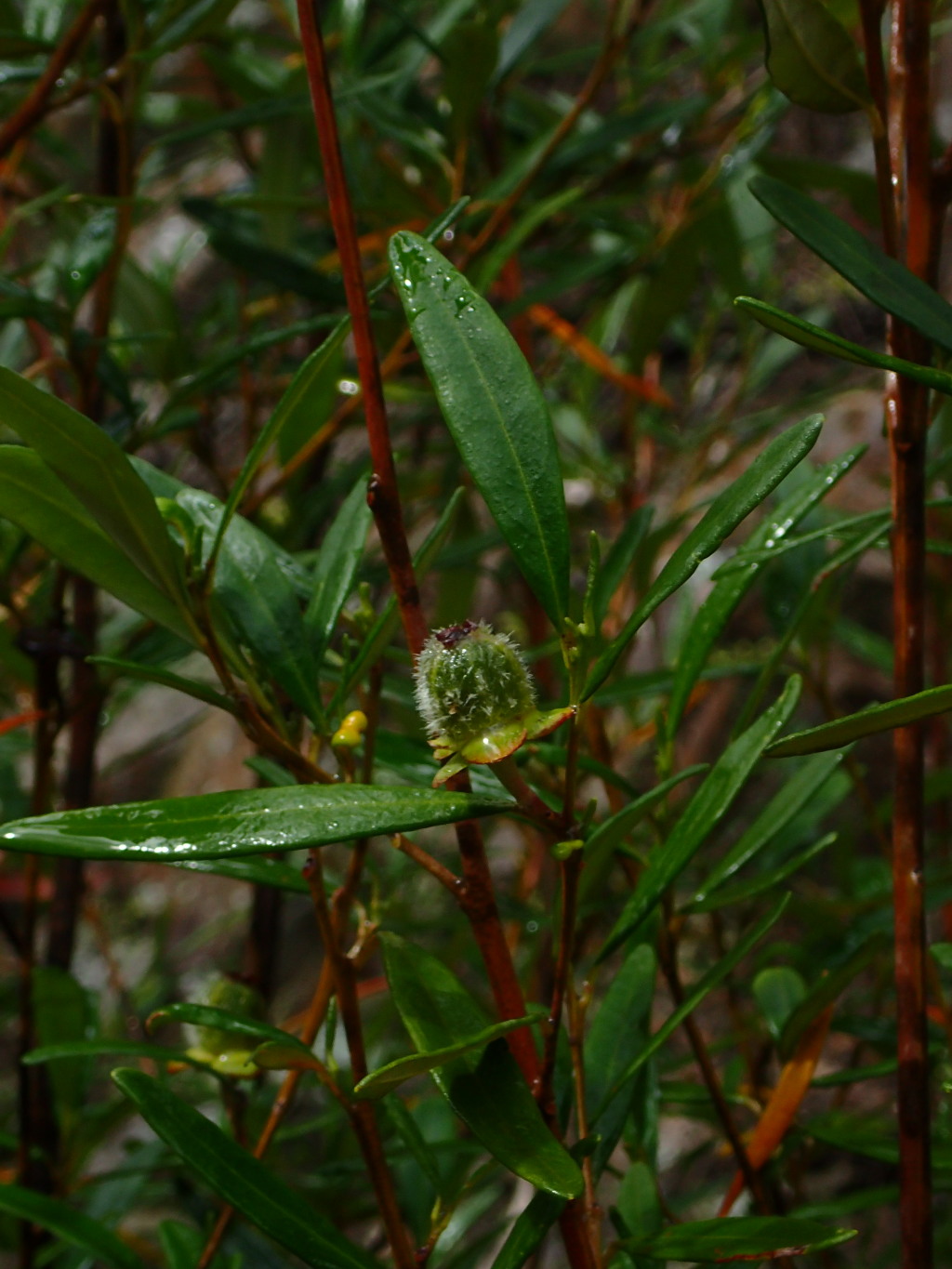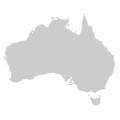Beyeria lasiocarpa
Müll.Arg. Wallaby-bushErect shrub or small tree 2–6 m high. Leaves oblong or ovate to elliptic, mostly 3–8 cm long, 7–20 mm wide, obtuse or emarginate, margins flat or slightly recurved, upper surface dark green, glabrous and often viscid, lower surface whitish-tomentose; petiole to c. 5 mm long. Male flowers 2 or 3 on peduncle to c. 20 mm long; bracts linear, to c. 3 mm long, green; female flowers solitary on peduncles to c. 20 mm long in fruit. Sepals of male and female flowers ovate, 4–5 mm long, white-tomentose; ovary densely bristly-hirsute, stigma 3–4 mm wide, sessile, flattish, slightly raised, persistent in fruit. Capsule subglobose, 8–10 mm long, densely bristly-hirsute; seeds 1–3, ovoid, c. 4 mm long, reddish-brown. Flowers mostly Dec.–Mar.
LoM, GipP, EGL, EGU, HSF, HNF. Also Qld, NSW. In Victoria confined to East Gippsland where localised but sometimes locally common on sheltered slopes or near streams, usually in rocky situations.
Jeanes, J.A. (1999). Euphorbiaceae. In: Walsh, N.G.; Entwisle, T.J., Flora of Victoria Vol. 4, Cornaceae to Asteraceae, pp. 55–82. Inkata Press, Melbourne.
 Spinning
Spinning

